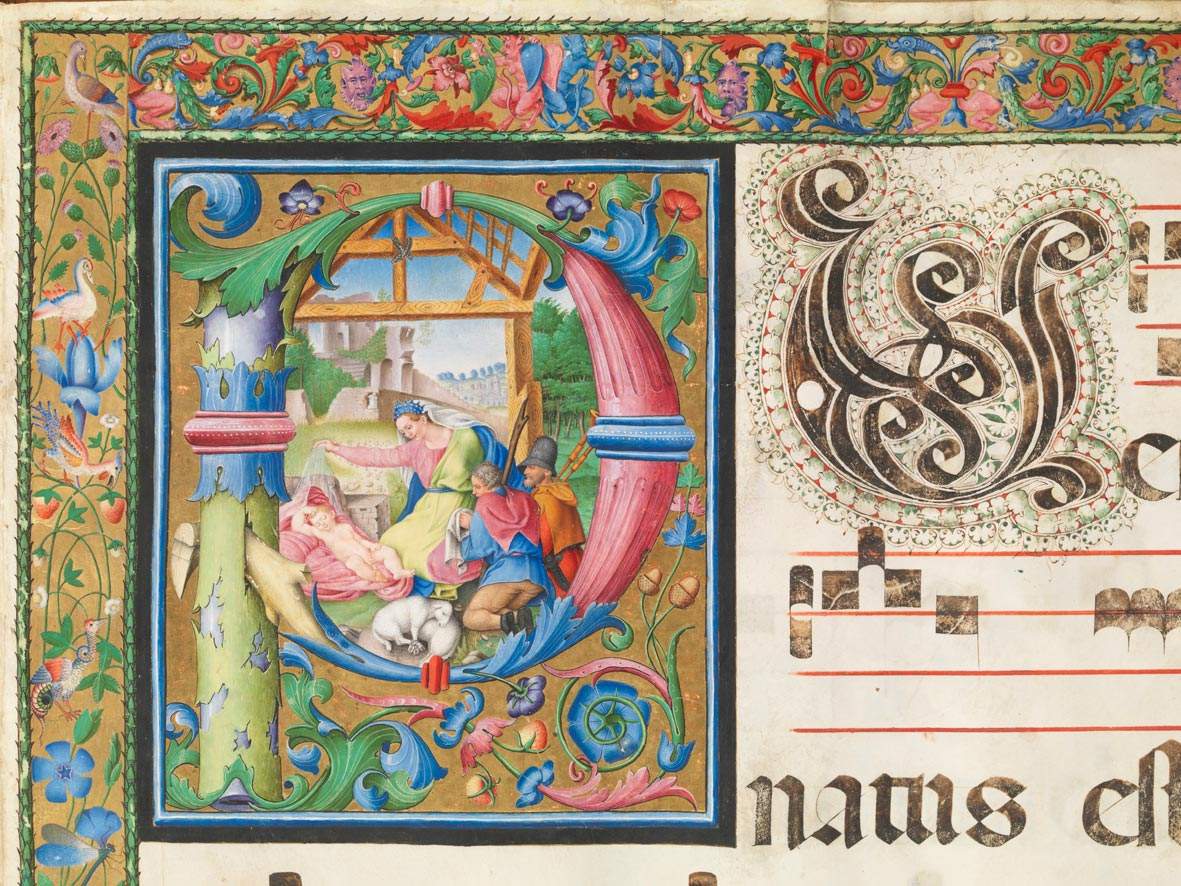Pavia, finishes the restoration of the important Codex Miniato 822 of the Charterhouse
The restoration of the Carthusian monastery’s Codex 822, an important specimen of a “Gradual,” or volume that collected the hymns of the Masses of the Liturgical Calendar of the Catholic Church, has been completed in Pavia: the graduals, very large books not suitable for individual reading, were opened and leafed through on large lecterns so that all the monks, from the choir stalls, could follow the music and words. Gradual 822, dating from 1544-1548, along with its twin, number 814, is the oldest in a series of thirteen choir books that were commissioned by Carthusians in the mid-sixteenth century for their daily needs. They are monumental, large, richly decorated codices: until 1782, the Carthusian Monastery kept thirty-nine of them (we know this from the inventarior’s edict dated December 16 of that year, at the time of the monastery’s suppression).
Following the suppression, the Carthusian Monastery’s holdings were dispersed: the Library brought together more than 10 thousand volumes including illuminated manuscripts, manuscripts and incunabula, most of which then ended up at the Braidense Library in Milan, the University Library of Pavia and to other destinations (largely unknown today). Moreover, these were also important books from an artistic point of view, since many of the greatest artists of Visconti and Sforza Milan worked on them (the Visconti and Sforza families were great patrons of the Charterhouse). The thirteen codices mentioned above have returned and have all been under study and restoration for some time.
The work on Codex 822 was carried out by Filippo Capellaro and Gianlorenzo Pignatti, and was financed within the Sleeping Beauty project of the General Directorate of Museums, which aims to recover works that are not on display in order to start research and enhancement paths also abroad. With the same funds, the conservation record of each of the thirteen surviving volumes was also compiled.
“This capillary survey,” explains Emanuela Daffra, director of the Polo Museale della Lombaria, “is fundamental: it provides a road map for future interventions, dictating priorities and making it possible to outline the financial commitment needed to restore the entire group. It also highlighted the inadequacy from a conservation point of view of the monumental cabinet, made specifically to contain the volumes at the end of the 19th century, when they returned to Certosa. Therefore, its re-functionalization was planned, entrusted to Luciano Gritti, which will allow proper conservation and display of the codices and will be completed by summer. Thanks to the collaboration of the monks who run the Charterhouse, in October the library will be exceptionally opened: an exhibition will present the restored volume in its current context, the gigantic container that encloses the other ’sleeping’ illuminated treasures The restoration was accompanied by the very high definition photographic shooting, carried out by Mauro Magliani, of every page of both gradual 822 and its twin 814, restored a few years ago by the nuns of Viboldone. Each codex, as it is restored, will be documented in the same way. It will thus be possible to leaf through the entire corpus of books virtually, to ’listen’ to the music that is annotated on those sheets, to compare the decorations with those of other volumes of the Charterhouse preserved elsewhere.”
The restoration of Codex 822 is the first step in a more ambitious overall project that the Polo Museale della Lombardia wants to complete in 2024: the reunion, physical or virtual, around the thirteen tomes all restored, of the best of the Carthusian library. Contacts have already been initiated with the institutions that conserve the volumes to welcome back, at least for the space of an exhibition, in what had been their home all the illuminated codices made for the coenoby of Pavia. Through the thread offered by the volumes and their comparison, not only will it be possible to shed light on authors and attributions, but above all it will be possible to resurface in a new key part of the history of one of the largest Carthusian monasteries in the world. Working on the project alongside Emanuela Daffra and Barbara Galli, director of the Certosa Museum, are Cristina Quattrini and Pierluigi Mulas, in partnership with the institutions holding the other codices.
 |
| Pavia, finishes the restoration of the important Codex Miniato 822 of the Charterhouse |
Warning: the translation into English of the original Italian article was created using automatic tools. We undertake to review all articles, but we do not guarantee the total absence of inaccuracies in the translation due to the program. You can find the original by clicking on the ITA button. If you find any mistake,please contact us.




























